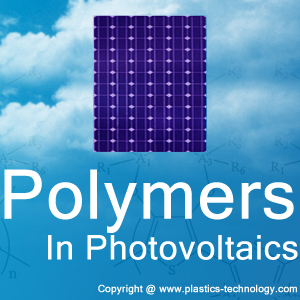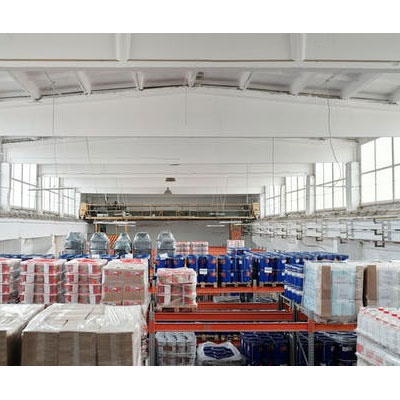Polymers in Photovoltaics

Right from NASA to the streets, everywhere we see Photovoltaics for different purposes and noticeably for electrical power generation for converting solar radiation into direct electricity using semiconductors. So, photovoltaic power generation equips solar panels made of solar cells containing a photovoltaic material. These materials presently used for photovoltaics includes polycrystalline silicon, monocrystalline silicon, amorphous silicon, copper indium gallium selenide/sulfide and cadmium telluride.
While, the current developments in photovoltaic panels based on crystalline silicon modules that are facing competition in the market by panels that have thin-film solar cells. These had been rapidly evolving and are expected to account for 31% of the global installed power by 2013. A polymer solar cell is a type of flexible solar cell made with polymers, large molecules with repeating structural units that produce electricity from sunlight by the photovoltaic effect. A polymer solar cell includes organic solar cells that also called "plastic solar cells". They are one type of thin film solar cell, others include the currently more stable amorphous silicon solar cell. Polymer solar cell technology is relatively new and is currently being very actively researched by universities, national laboratories, and companies around the world.
Material Particulars
Usually polymer solar cells consist of an electron- or hole-blocking layer on top of an indium tin oxide conductive glass followed by electron donor and an electron acceptor, a hole or electron blocking layer, and metal electrode on top.
- Cells by self-assembly involves the work that has examined using supramolecular chemistry, donor and acceptor molecules that join upon spin casting and heating.
- Diblock polymers containing fullerene yield stable are organic solar cells upon thermal annealing.
- Progress on BCPs containing polythiophene derivatives yield solar cells that assemble into well defined networks.
- Infrared polymer cells preferentially absorb light in the infrared range rather than the visible wavelength range. Such cells can be made nearly 70% transparent to the latter. The cells allegedly can be made in high volume at low cost using solution processing.
Advantages of Polymers in Photovoltaics
Polymer Photovoltaics are a type of flexible solar cell with a stable, thin-film semiconductor deposited on different types of plastic substrate.
- Polymer solar cells are lightweight compared to silicon-based devices and this is important for small autonomous sensors, easily disposable and low cost for fabricating
- The material is flexible and customizable at molecular level, and has lower potential for negative environmental impact.
- When stress is applied on the front glass, the polymer layer around the cell can influence laminate stiffness, creep and other aspects
Disadvantages
- The serious disadvantages in using polymer photovoltaic is the efficiency of the best plastic devices is little more than 8%, whereas silicon solar panels can achieve up to 18%
- Currently, plastic photovoltaic is also relatively unstable toward photochemical degradation
- The lifetime of plastic photovoltaic currently doesn't come anywhere near that of silicon solar panels
- Despite the continuing advances in semiconducting polymers, the vast majority of solar cells still rely on inorganic materials.
- Polymer solar cells also suffer from environmental degradation owing the lack of effective protective coatings.
Competition for Polymers in Photovoltaics
Currently polymer solar cells are facing a lack of enough efficiency for applications in large scale and the stability problems are hindering the promise of extremely cheap production and followed by the high efficiency values that have led them to be one of the most popular fields in solar cell research. The other materials available are
- Acrylic materials that have an important role in photovoltaics market
- The under developed new backsheets included the polyolefin-based coextruded sheets
- While, 3M supplies adhesives to the solar module industry, such as bonding for junction boxes, cell positioning tape and acrylic foam, frame-bonding tape, along with fluoropolymer backsheets that are UL and IEC certified.
- The silicon solar cell industry has the important industrial advantage of being able to leverage the infrastructure developed for the computer industry.
Commercialization
Market has to depend on other similar materials, because of the uncertainty on the degree that polymer solar cells can commercially compete with silicon solar cells and the other thin-film cells. Along with this, the current efficiency of polymer solar cells lies near 10% and much more below when compared to the value for silicon cells.
Another major barrier is the quantity of production, because of the polymer solar cells are not widely produced commercially. Now-a-days, most commercial solar cells are made from a refined, highly purified silicon crystal, similar to the material that is used in the production of integrated circuits and computer chips. Hence, the high cost of these silicon solar cells and their complex production process has attracted market interests in developing alternative photovoltaic technologies.
The organic Photovoltaic devices are very potential in decreasing the cost of solar energy up to the extent that they may become widespread in the near future. However, a great progress has been made in the last decade to understand the chemistry, physics, and materials science of organic photovoltaics. The optimized and well laid photovoltaics polymer will see breakthroughs ahead, by promoting charge carrier diffusion. The recent novel molecular chemistries and materials are efficient of these devices in the very near future.
| Also Read: The Role of Thermosetting Polymers in the Plastics Industry |



